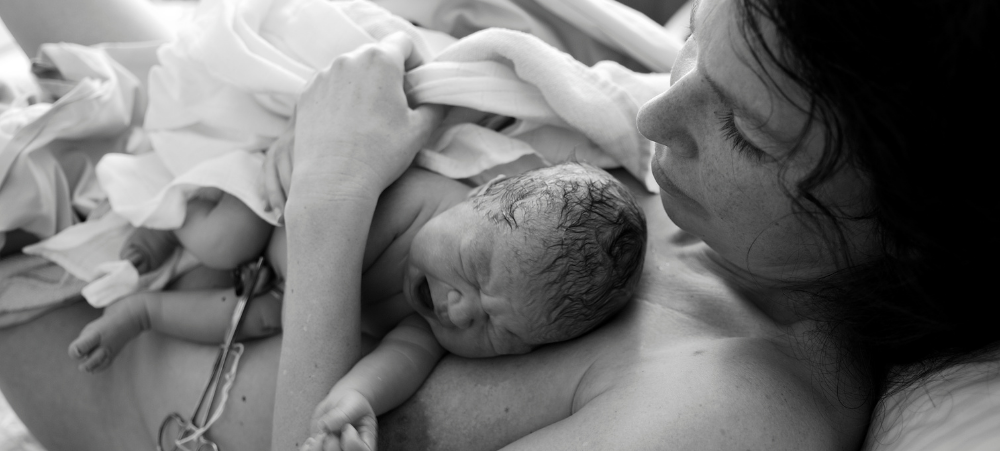You may have heard the terms “skin-to-skin” or “kangaroo care” when it comes to interacting with a newborn baby. It refers to the amazing benefits that have been found when a mother has the opportunity to place their newborn baby skin-to-skin straight after birth. It also refers to skin-to-skin contact during the newborn phase from both mother and father.
Of course, birth can be an unpredictable time – and that includes the need for doctors or nurses to have to handle your baby immediately after birth for medical reasons or for the baby to be placed in an incubator. If these things occur, skin-to-skin does not have an expiry date when it comes to your baby and can take place as soon as it is medically safe to.
Here are just some of the scientifically proven benefits of kangaroo care:
- Skin-to-skin contact helps regulate a baby’s temperature. When mom/dad and baby are skin to skin, the parent’s chest temperature adjusts to warm up a cool baby, or cool down a too-warm baby. This phenomenon is called “thermal synchrony.”
- Skin-to-skin contact increases the paternal bond. One study followed mothers and babies who experienced skin-to-skin contact right after delivery compared to mothers who only viewed their child briefly immediately after birth. Days later the mothers who had skin-to-skin contact were shown to be more comfortable caring for and handling their babies. One year later those same mothers were found to touch, hold and interact with their children more.
- Skin-to-skin contact can help keep heart and breathing rates stable. Newborns panic when they are separated from their mother immediately after birth. That separation causes stress, which can increase both heart and breathing rates. Being skin to skin with their mother reduces stress and helps keep a baby’s heart rate and breathing normal.
- Babies cry less when they are skin to skin with their parent. Being close to their parents is natural for babies. Studies show that babies cry less when skin to skin with their mothers than babies who have been separated from mom.
- Human touch is an integral part of brain development. Touch and movement have been shown to be the basic building blocks for brain and social development. Early skin-to-skin contact helps to set a pattern for continued holding, carrying and touching.
- Moms who have early skin-to-skin contact breastfeed more and longer. When babies are placed skin-to-skin on their mother after delivery, research has shown that they follow a series of steps to familiarise themselves with their mother, eventually making their way to the breast on their own to begin breastfeeding.
The research results are so strong, in fact, that the American Academy of Pediatrics now recommends that immediately after delivery all healthy infants be placed in direct skin-to-skin contact with their mothers as soon as possible and at least for the first hour.
How to Hold Your Baby Skin to Skin:
Find some good times throughout the day when skin-to-skin works best for you, your baby, and your partner. This might be during feedings (whether by breast or bottle), right before a bath, or just before putting pyjamas on for bedtime.
Place your baby in a nappy only. Moms remove your bra. Hold your baby directly against your bare chest. Make sure your baby’s head is turned to the side, so he or she can easily breathe, and hold your baby close enough for you to kiss the top of their head. Your body will keep them warm. It’s fine to drape a thin blanket over your baby’s back. All you need to do after that is sit quietly and enjoy being close and together.
- Kangaroo care and its benefits - September 27, 2024
- Budgeting with children - September 25, 2024
- Top ways to balance work and parenting - September 19, 2024




